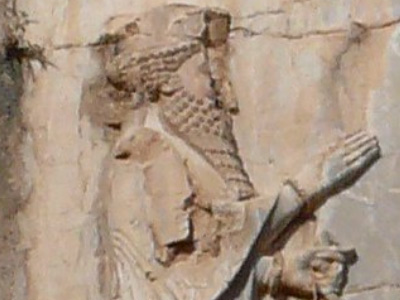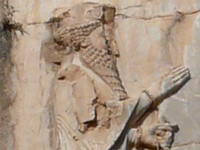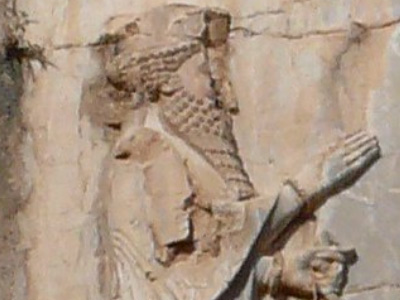Battle of Artemisium (480 BC)

Prelude
The Allied fleet sailed north to Cape Artemisium once it became known that the Persian army was advancing along the coast past Mount Olympus, probably around late July or the beginning of August. The Allies took up station at Artemisium, most likely beaching their ships at the headland, from which they could quickly launch them as needed. The Allies sent three ships to Skiathos as scouts to provide warning of the approach of the Persian fleet but two weeks passed without sight. Finally, ten Sidonian triremes arrived off Skiathos, and the main Allied fleet was informed by a fire-beacon lit on the island. However, the Allied patrol ships themselves were caught unaware and two were captured, whilst one ran aground. According to Herodotus, in the ensuing confusion, unsure whether or not the beacon heralded the arrival of the whole Persian fleet, as a precaution the whole Allied fleet launched into the straits of Artemisium. Once it became clear that the Persian fleet was not going to arrive that day, they decided to sail to Chalcis, halfway down on the western coast of Euboea, leaving men on the heights of Euboea to warn of the actual arrival of the Persian ships.
Historians suggest that the Allies may have misinterpreted the Persian movements and come to the mistaken conclusion that the Persians were sailing east around Skiathos, aiming to sail around the eastern side of Euboea. The signals sent by fire beacons must have been very simplistic, and potentially interpreted wrongly; alternatively, the signallers may have genuinely believed that the Persian fleet was sailing to the east of Skiathos. If the Persians sailed around the outer, eastern side of Euboea, they could head straight to Attica, and thereby cut off the Allied fleet's line of retreat. Furthermore, the Persians had enough ships to attempt to both attack the Straits of Artemisium, and sail around Euboea. The withdrawal to Chalcis therefore gave the Allies the opportunity to escape from the Straits of Euboea if the Persians did travel around the outside of Euboea, but also allowed them to return to Artemisium if necessary. In this context, the watchers left on Euboea could inform the Allies if the Persian fleet did indeed sail east of Euboea. The Allied fleet thus continued to wait at Chalcis. Nevertheless, the Allies, undoubtedly anxious about facing a Persian fleet that so greatly outnumbered them, may have somewhat overreacted.
Around ten days later, the Persian army arrived at Thermopylae, and the Allies at Chalcis were informed by a ship, captained by Abronichus, which had been appointed to liaise between the army and the fleet. However, there was still no sign of the Persian fleet, and the first day the Persians spent at Thermopylae passed without them launching an attack. The next day, the Persian fleet finally drew near to Artemisium, heading for the Gap of Skiathos (between the coast of Magnesia and Skiathos), when a summer gale (a 'Hellesponter' - probably a north-easterly storm) broke, driving the Persian fleet onto the mountainous coast. The storm lasted two days, wrecking approximately one third of the Persian ships. Meanwhile, at Thermopylae, the Persians had continued to wait for the Greeks to disperse, also choosing not to attack during the storm.
The day after the storm finished, the Allied fleet returned to Artemisium to protect the flank of the army at Thermopylae. The following day, (the fifth since the Persians had arrived at Thermopylae) the Persian army began their attacks on the Allied army at Thermopylae. The same day, the Persian fleet finally appeared through the Gap of Sciathos, and began mooring on the coast opposite Artemisium, at Aphetae. According to Herodotus, 15 Persian ships blundered into the Allied lines, and were captured. Although clearly storm damaged, the Persian fleet still probably outnumbered the Allies by nearly 3:1. As a result, the Allies contemplated withdrawing completely. The Euboeans, not wanting to be abandoned to the Persians, bribed Themistocles to try to ensure that the Allied fleet remained. Since the joint operation at Thermopylae and Artemisium was his strategy in the first place, it is likely this is exactly what Themistocles wanted, and this bribe allowed him in turn to bribe the Spartan and Corinthian admirals, Eurybiades and Adeimantus to remain at Artemisium.
Later on that day, a deserter from the Persian fleet, a Greek called Scyllias, swam into the Allied camp. He brought bad news for the Allies — whilst most of the Persian fleet was undergoing repairs, the Persians had detached 200 seaworthy ships to sail around the outer coast of Euboea, to block the escape route of the Allied fleet. The Persians did not want to attack the Allies yet, because they thought the Allies would simply flee, and so they sought to trap them. The Allies resolved to go and meet this detachment, to prevent being trapped, though they planned to leave by nightfall to prevent the Persians becoming aware of their plans.
The Allies most likely realised that this situation presented them with an opportunity to destroy an isolated part of the Persian fleet. Herodotus is not clear on where the Allies planned to meet this detachment, only that they resolved to do so. One possibility is that they planned to sail down the Straits of Euboea, and hope that the other Allied ships, patrolling the coast of Attica, followed the Persians as they entered the Straits of Euboea from the south; then the Persians might themselves be caught in a trap. Alternatively, the Allies may have planned to ambush the detachment as it passed by Artemisium, on its journey from Aphetae. Either way, they decided to make a demonstration towards the Persian lines during what remained of the day, to convince the Persians that they were planning to stay at Artemisium. Herodotus also suggests that this was an opportunity for them to assess Persian seamanship and tactics. The Allies probably waited until late afternoon so that there was little chance of being drawn into a full scale engagement; they did not want to suffer casualties before sailing to meet to the Persian detachment. These decisions finally led to the beginning of the battle.
HISTORY

RESOURCES
This article uses material from the Wikipedia article "Battle of Artemisium (480 BC)", which is released under the Creative Commons Attribution-Share-Alike License 3.0.
© Stories Preschool. All Rights Reserved.









